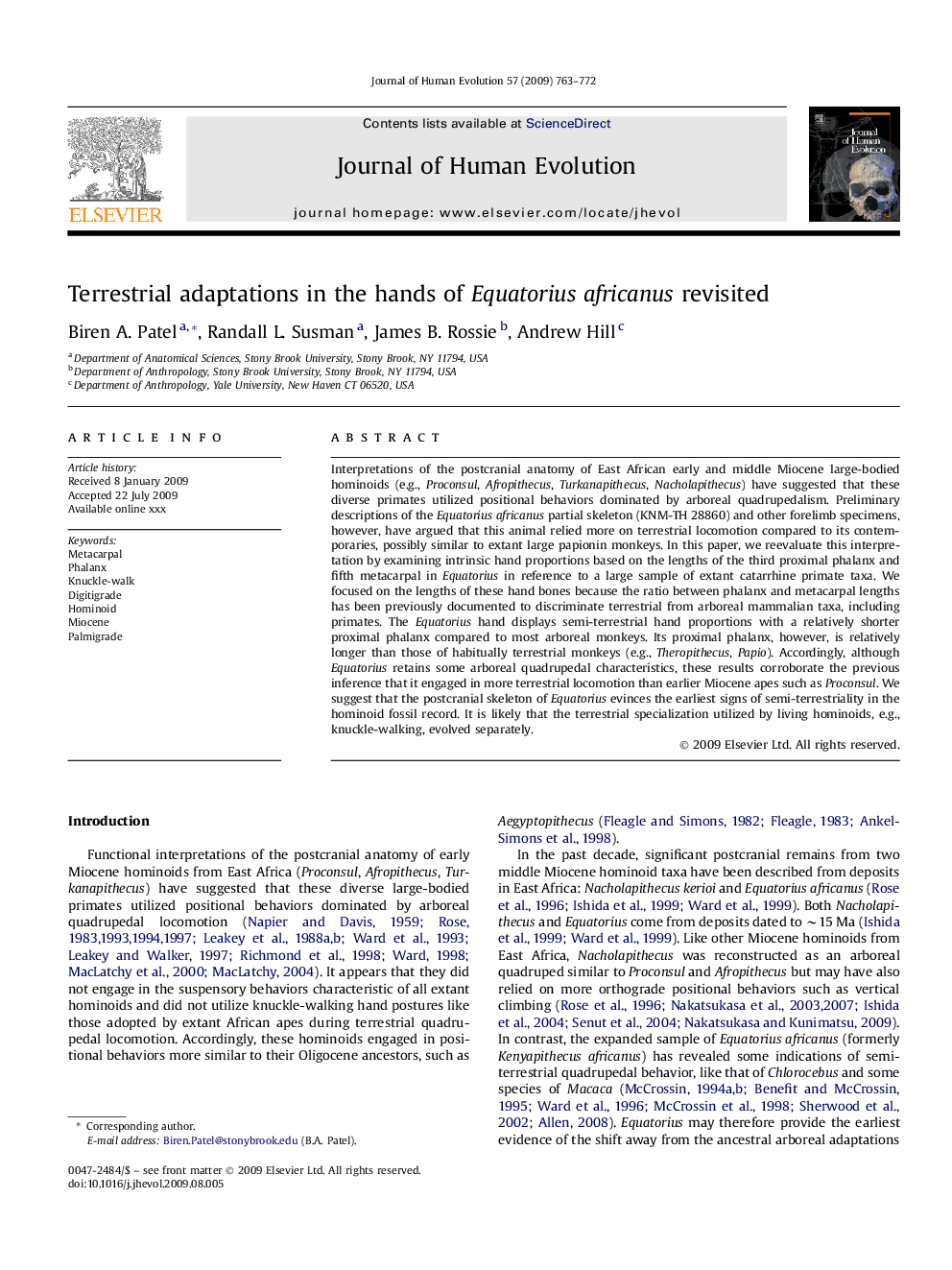| کد مقاله | کد نشریه | سال انتشار | مقاله انگلیسی | نسخه تمام متن |
|---|---|---|---|---|
| 4556807 | 1329504 | 2009 | 10 صفحه PDF | دانلود رایگان |

Interpretations of the postcranial anatomy of East African early and middle Miocene large-bodied hominoids (e.g., Proconsul, Afropithecus, Turkanapithecus, Nacholapithecus) have suggested that these diverse primates utilized positional behaviors dominated by arboreal quadrupedalism. Preliminary descriptions of the Equatorius africanus partial skeleton (KNM-TH 28860) and other forelimb specimens, however, have argued that this animal relied more on terrestrial locomotion compared to its contemporaries, possibly similar to extant large papionin monkeys. In this paper, we reevaluate this interpretation by examining intrinsic hand proportions based on the lengths of the third proximal phalanx and fifth metacarpal in Equatorius in reference to a large sample of extant catarrhine primate taxa. We focused on the lengths of these hand bones because the ratio between phalanx and metacarpal lengths has been previously documented to discriminate terrestrial from arboreal mammalian taxa, including primates. The Equatorius hand displays semi-terrestrial hand proportions with a relatively shorter proximal phalanx compared to most arboreal monkeys. Its proximal phalanx, however, is relatively longer than those of habitually terrestrial monkeys (e.g., Theropithecus, Papio). Accordingly, although Equatorius retains some arboreal quadrupedal characteristics, these results corroborate the previous inference that it engaged in more terrestrial locomotion than earlier Miocene apes such as Proconsul. We suggest that the postcranial skeleton of Equatorius evinces the earliest signs of semi-terrestriality in the hominoid fossil record. It is likely that the terrestrial specialization utilized by living hominoids, e.g., knuckle-walking, evolved separately.
Journal: Journal of Human Evolution - Volume 57, Issue 6, December 2009, Pages 763–772